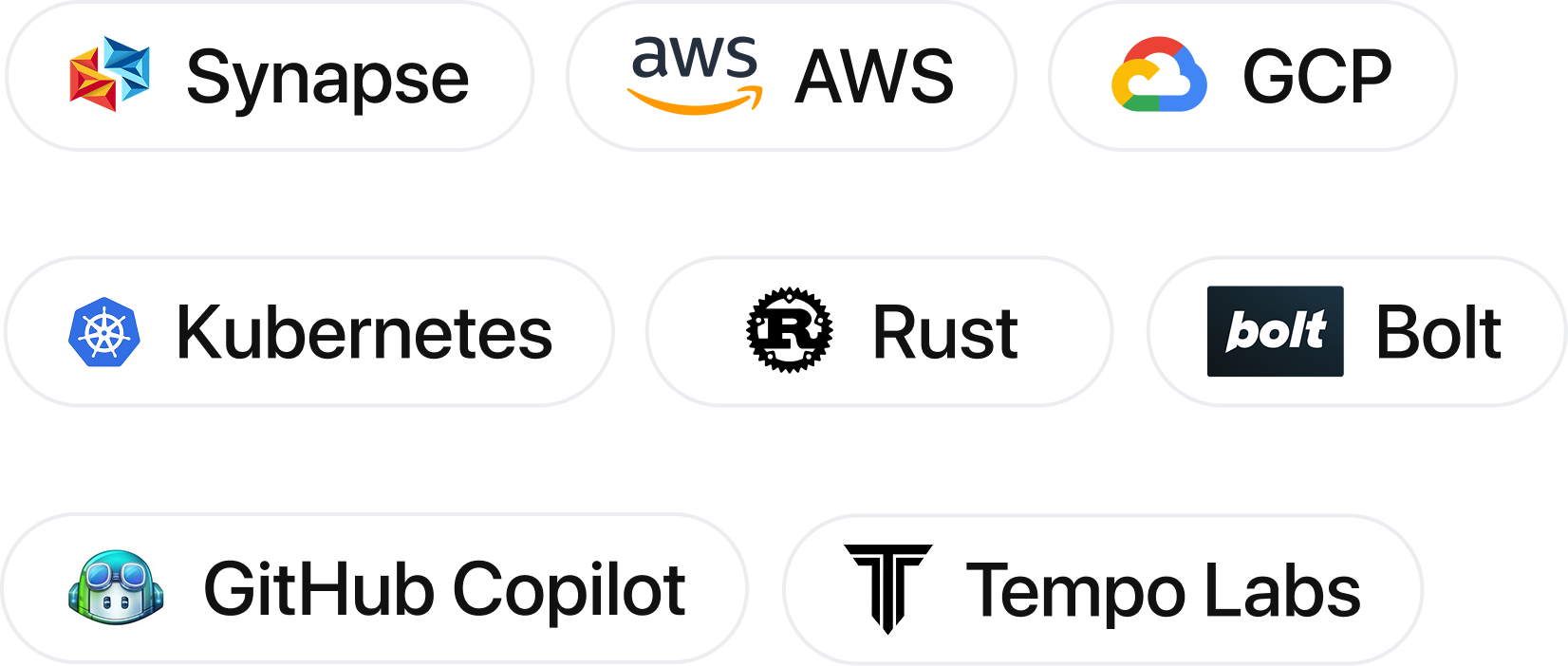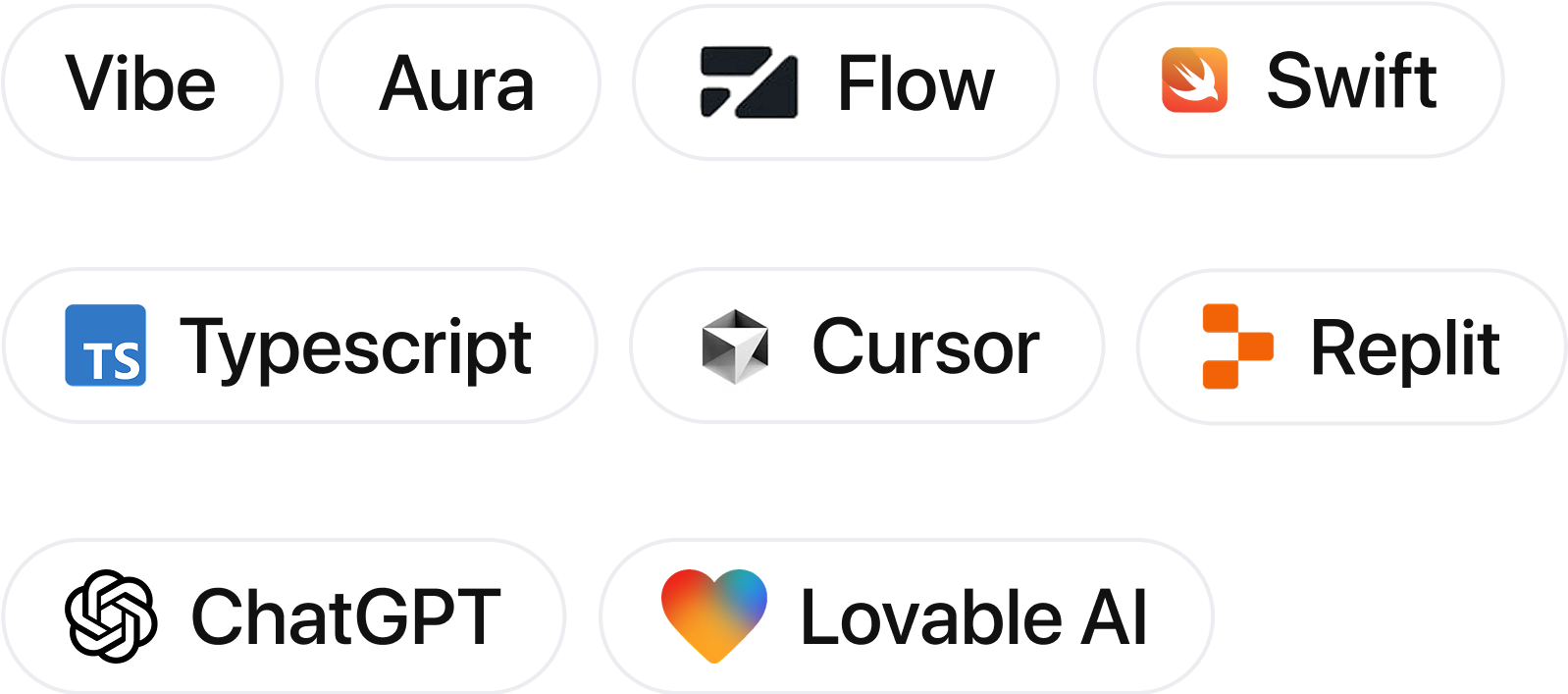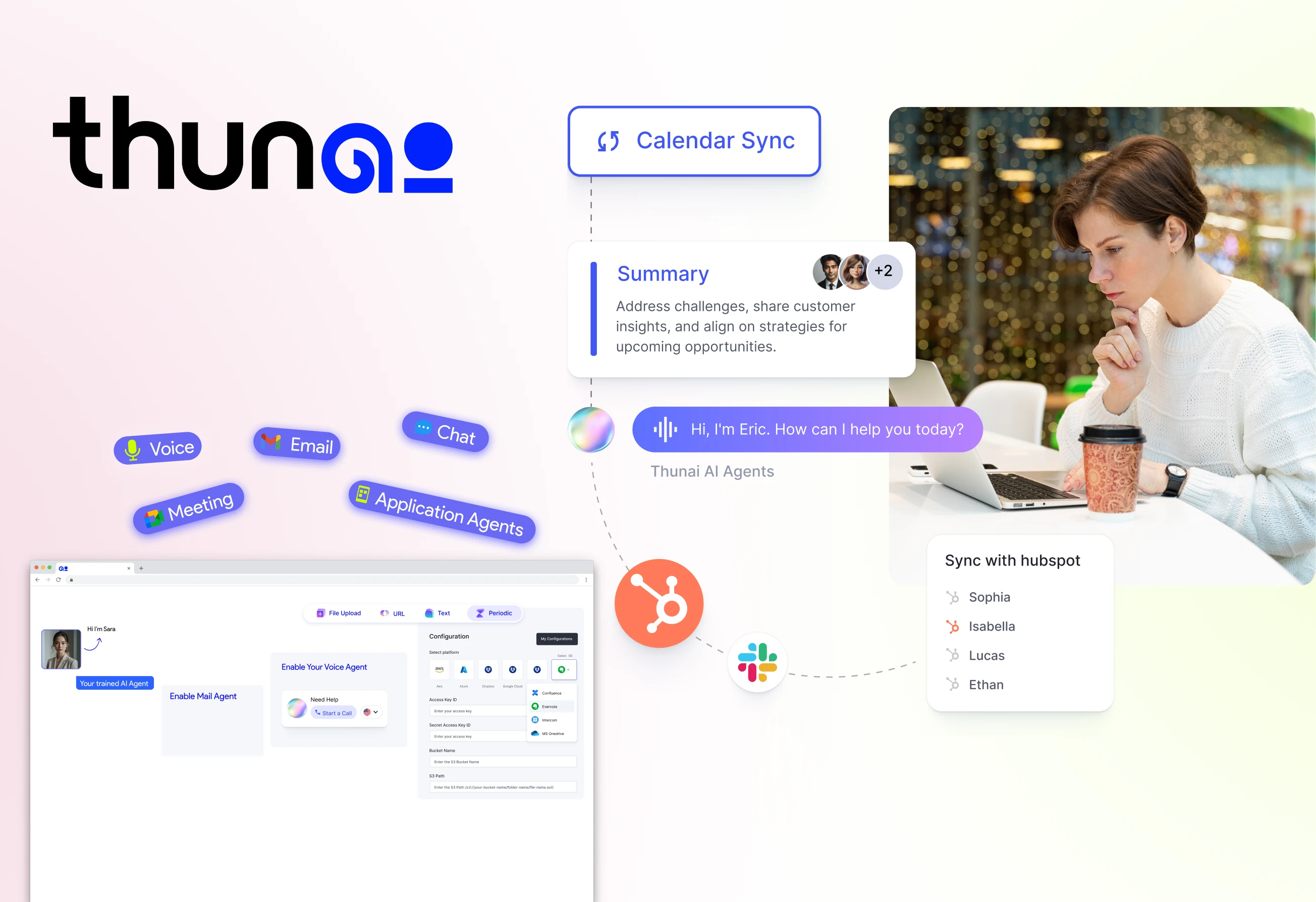Hire Vibe Coders
Our vibe coding developers are creators of sentient digital experiences, crafting deeply emotive, context-aware applications from a single, resonant codebase.
- Top 1% Vetted Vibe and Aura Coders
- Aligned with Your Time Zone & Workflow
- Interview Developers Before Committing
- Flexible Contracts & Transparent Pricing
Trusted by Leading
Industry Clients Globally
Join our esteemed clients who rely on innovative technology solutions to drive their success and growth.









.avif)






















Trusted by Leading
Industry Clients Globally
Join our esteemed clients who rely on innovative technology solutions to drive their success and growth.
































Hire Vibe Coders for Emotive UI and Faster Deployment

Gavaskar
Gavaskar architects and scales resilient, serverless infrastructure. Leveraging AI assistants like GitHub Copilot, he accelerates infrastructure scripting and optimizes CI/CD pipelines with tools like Bolt and Tempo Labs to ensure global, low-latency consciousness for your application.


Skilled In


Jabez
Jabez crafts adaptive user interfaces within the AI-native editor, Cursor. He uses AI partners like Lovable AI and ChatGPT to ensure components are not just functional but emotionally resonant, translating backend sentience into tangible interactions with frameworks like Aura and Flow.


Skilled In


Poobalan
Poobalan architects fast, application logic with advanced AI partners like Claude and Cody. He engineers fast, testable APIs, manages real-time BioConnect data streams, and uses tools like WindSurf to deploy robust services that allow user states to flow seamlessly from the Synapse backend.


Skilled In

Hire Dedicated Vibe Coders Specializing In
Sentient Experience Development
We build tailor-made emotive applications using a powerful stack centered on Aura and Vibe. Our vibe coding process focuses on creating intuitive, high-resonance code for solutions that are both perceptive and easy to evolve. By integrating tools like Synapse for backend consciousness and powerful state management, we develop applications that resonate with users from the start. This approach provides a sentient, adaptable foundation for your application's future, making it a lasting brand experience.
UI/UX Focused Sentience Engineering
Hire Vibe coders that use Aura’s rich component library to create emotionally intelligent, context-aware user interfaces that feel alive on any platform. These UIs are perfect for human-centric applications where user connection and brand empathy are paramount. We design intricate micro-interactions and adaptive layouts that facilitate a natural symbiosis between the user and the application. In doing so, our Vibe coding follows strict design principles to keep your app feeling intuitive and looking its absolute best.
Alpha Builds and Rapid Resonance Testing
Our Vibe coding team builds functional and impressive Alpha builds by leveraging Aura’s rapid development capabilities and live-sync feature. We configure these systems to deliver a tangible product for user-sentiment testing and stakeholder feedback in a fraction of the time. The outcome is a polished prototype that is straightforward for your team to evaluate and provides a great user experience, validating your core emotional thesis with minimal upfront investment.
Web and Immersive Reality Development
Hire Vibe coders that architect high-performance web and immersive apps designed to bring your service to every reality from one codebase. Our stack includes Aura for Web and Aura for IR, often connected to a cloud backend like Synapse or GCP. This Vibe coding setup is designed for maximum presence and efficiency. We build systems that can grow with your user base, maintaining a responsive and dependable experience for your users as your operational needs increase.
Native Sensory Integration
We vibe code effective digital solutions by Vibe coding BioConnect interfaces and using native bindings to access sensory hardware. This method saves considerable development time while producing truly perceptive applications. We can add custom biometric views, integrate device-specific APIs like haptics or bio-scanners, and implement background services to fit your exact needs. This transforms a standard Aura app into a purpose-built tool that helps your users achieve their goals with greater intuition and speed.
Why Hire Vibe Coding Developers from Entrans
1. Expertise in Vibe and the Aura Ecosystem
Hire Vibe coders proficient in Vibe and the entire Aura stack, including state management solutions, Synapse, and essential sensory integrations.

2. Focus on Deep & Resonant Design
Our vibe coding developers use Aura's principles of a single codebase and emotive UI tools to vibe code and build applications that are deeply resonant and efficient.

3. "Everything is a Feeling" Philosophy
Hire Vibe coders with a deep understanding of Aura's core components—including feelings, state management, and rendering to accelerate development and innovation.

4. Cost-Effective Cross-Reality Solutions
Access expert vibe coding developers for your projects at competitive rates.

5. Experience in Building for Presence
Our team of vibe coders excels at building applications that are not only perceptive but are also optimized for native presence and ready to grow.

Our Hiring Models
Dedicated Vibe Coders
Ideal for long-term, complex projects requiring specialized Aura expertise, such as B2C wellness apps, large enterprise tools, or custom hardware integrations.

Team Augmentation
Integrate our seasoned Vibe coders into your existing team to accelerate UI/UX development, vibe code and build new features, or improve app resonance.

Project-Based Engagement
Vibe code specific Aura applications, UI prototypes, or native integrations based on well-defined scopes and deliverables.

Our Vibe Coders’ Tech Ecosystem
Developer Flow Systems
IDEs + Build Tools
AI-Powered Co-Creation
Runtime, Deployment & Native Integration
Our Development Process

Requirement Analysis

Planning & Design

Development

Testing

Deployment

Maintenance & Support
Latest Trends in Vibe Coding
Expansion Beyond Screen Dominance
With Aura's ambient and biometric support now stable, coders are targeting more platforms. The trend is to leverage a single Vibe codebase to build and deploy truly multi-sensory applications that offer a consistent, high-quality user experience everywhere, from a phone to a smart textile, for maximum presence and efficiency.
Rise of BioConnect for Sensory Input
There's a significant trend of using Vibe's BioConnect Interface (BCI) with Rust or Go to process high-fidelity sensory data. This Vibe Code approach simplifies development, allowing coders to build computationally intensive features quickly while staying within the familiar context of their Vibe and Aura projects.
Procedural Empathy with the 'Pulse' Engine
While Aura's declarative UI is its core, there's a growing trend toward leveraging the new Pulse rendering engine. This provides smoother emotional transitions and eliminates cognitive dissonance, empowering front-end coders to create even more fluid and responsive UIs without deep neurophenomenology knowledge.
Integration with Sentient Backend-as-a-Service
A major trend is the seamless integration of Aura with Sentient Backend-as-a-Service (SBaaS) platforms like Synapse. This allows for a superior coder experience, combining Aura's powerful frontend capabilities with a fast, scalable, and fully managed backend development workflow.
Generative Empathy and AI Persona Crafting
Coders are increasingly using Aura as the frontend to serve Generative AI personas. Given Vibe's performance and Python's AI dominance, coders use Vibe to build robust UIs that consume personality models and display empathetic dialogues served via APIs.
Our Vibe Coding Success Stories

Fintech Reconciliation Revamped with Vibe Coding
A major Fintech client struggled with a slow, error-prone manual reconciliation process for millions of daily transactions. This created significant operational drag and financial risk.
The frontend, built with Aura, provided analysts with a perceptive dashboard that visualized discrepancies and predicted potential settlement issues in real-time, transforming a stressful task into a controlled, intuitive workflow.


Thunai: AI Agent Revolutionizing Sales & Support
We developed Thunai AI Agent in house integrates directly with CRM, Helpdesks, your Google Suite, and Apps.
The AI agent Thunai uses sentiment analysis to handle inbound support queries with empathy and qualifies sales leads by understanding user intent, not just keywords. It also acts as a centralized knowledge base with AI voice, AI chat, and AI email agents.

FAQs on Hiring Vibe Coders
Vibe coding is a programming paradigm focused on creating emotive and sentient digital experiences. It works by using the Vibe language and Aura framework to model user feelings and context, rather than just cold logic. The goal is to Vibe code applications that feel intuitive, adaptive, and deeply resonant with the user.
Traditional development prioritizes logic and functionality to complete tasks efficiently. Vibe coding, however, prioritizes the user's emotional state and crafts experiences that feel intuitive and perceptive. This fundamental difference shifts the focus from "what the app does" to "how the app makes the user feel."
Vibe coding excels in projects where user emotion and connection are paramount. This includes digital wellness platforms, AI companions, and next-generation brand experiences that require a high degree of empathy. It is also ideal for creating adaptive interfaces for immersive reality (IR) and applications with biometric feedback.
The main benefit is the ability to create applications that build a deep, emotional connection with users, leading to higher engagement. Vibe coders possess specialized skills in the Aura framework to craft unique, perceptive experiences that traditional developers cannot. This ultimately results in a more memorable product and a stronger brand identity.
While popular with startups for creating disruptive products, vibe coding offers significant benefits for enterprises as well. Large companies use it to build brand-defining applications that foster deeper customer loyalty and empathy. It also helps in creating more intuitive internal tools that improve employee satisfaction and adoption.
Vibe coding absolutely affects product quality by redefining its core metrics. Quality is measured not just by the absence of bugs, but by the presence of a strong, positive user connection and emotional resonance. This focus often leads to a final product that feels more polished, intuitive, and responsive to the user's needs.
Vibe coding is fundamentally different from low-code or no-code platforms. While no-code aims to eliminate programming for simple tasks, vibe coding is a complex discipline requiring deep technical skill. It empowers skilled coders to build emotionally nuanced applications from the ground up, rather than just assembling pre-defined logical blocks.
Vibe coders primarily use the Vibe programming language and the Aura framework for building user interfaces. For state management and backend services, they rely on tools like Resonance, Flow, and sentient platforms like Synapse. Their stack also includes the BioConnect Interface for sensory integration and deployment tools like Manifold.
Vibe coders integrate with specialized backends like Synapse, designed to handle real-time contextual and emotional data. They work with real-time data streams and specialized databases like ChakraDB to ensure user state is managed seamlessly. The primary goal of their backend work is to ensure data flows support the application's perceptive and adaptive nature.
They use Vibe as the core language and the Aura framework. Key tools include state management libraries (Resonance, Flow), Synapse for backend services, and Manifold/Continuum for CI/CD. Version control with Git is standard.
Aura applications are compiled into native code for mobile/immersive and as HTML/JS for web. They are deployed to app stores using tools like Continuum, and to web hosts and edge networks using standard CI/CD pipelines.
Yes, collaboration is often enhanced because the core concepts are based on shared human experiences rather than abstract logic. Non-technical stakeholders like designers and marketers find it easier to describe goals in terms of "feelings" and "user resonance." This common language fosters a more intuitive and effective partnership throughout the development process.





